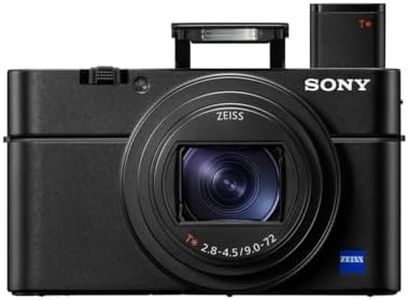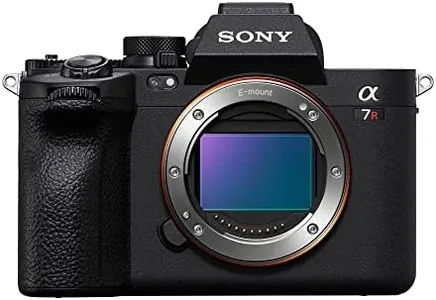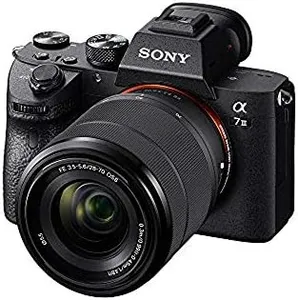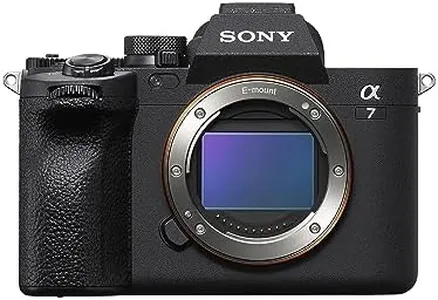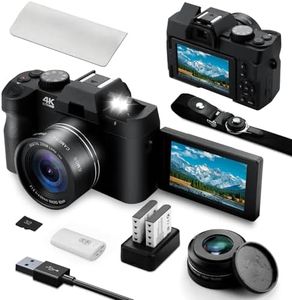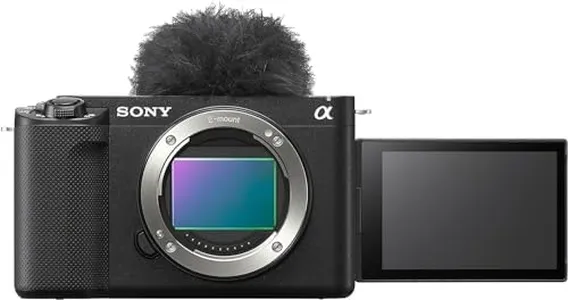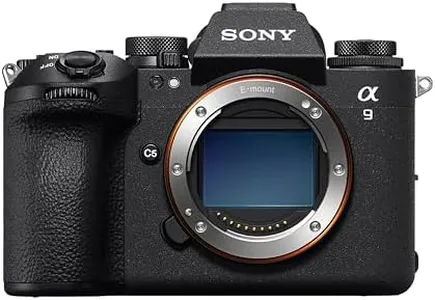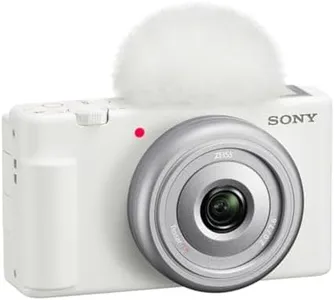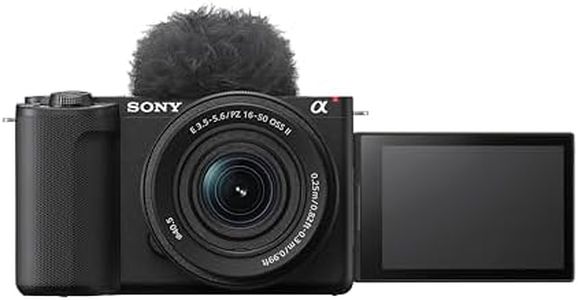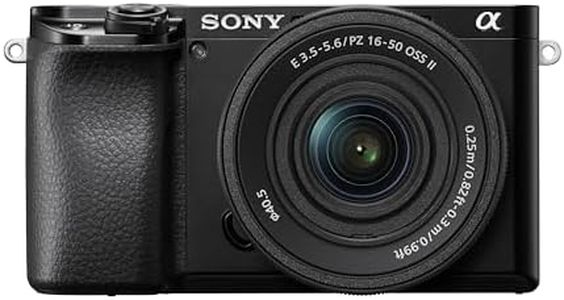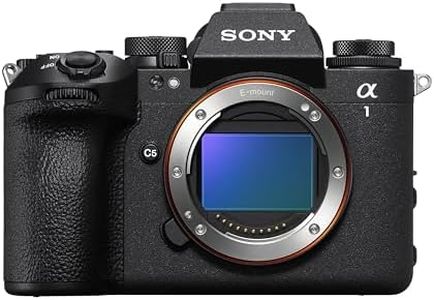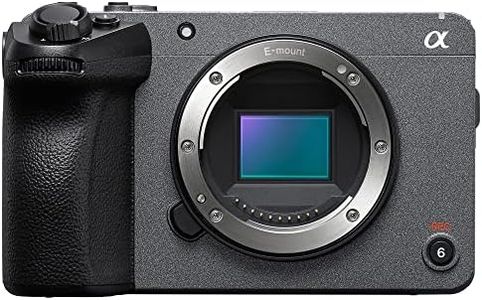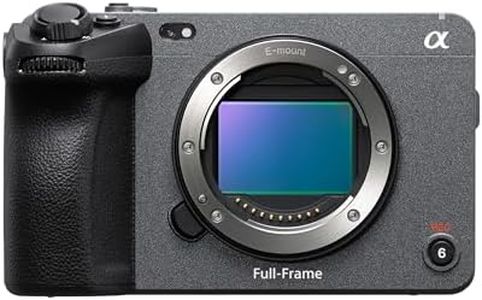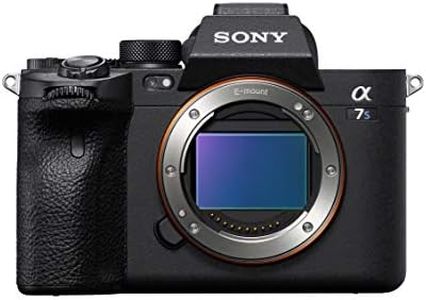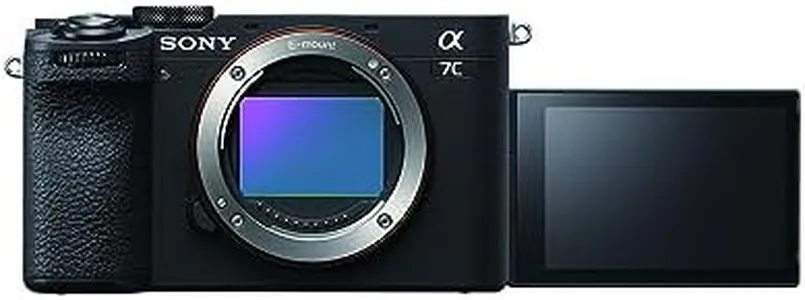10 Best Sony Cameras 2025 in the United States
Our technology thoroughly searches through the online shopping world, reviewing hundreds of sites. We then process and analyze this information, updating in real-time to bring you the latest top-rated products. This way, you always get the best and most current options available.

Our Top Picks
Winner
Sony RX100 VII Premium Compact Camera with 1.0-type stacked CMOS sensor (DSCRX100M7)
Most important from
630 reviews
The Sony RX100 VII is a high-end compact camera with impressive specifications. It features a 20.1 MP 1.0-type stacked CMOS sensor, which delivers excellent image quality. The Zeiss Vario-Sonnar T* 24-200mm lens offers a versatile zoom range, making it suitable for various shooting scenarios from wide-angle to telephoto. The camera's autofocus system is advanced, with 357 phase-detection and 425 contrast-detection points, allowing for quick and accurate focus. The AI-based real-time tracking and eye AF for both stills and movies enhance the user experience, especially for capturing moving subjects.
Video capabilities are robust, including 4K recording with active mode image stabilization and a microphone jack for better audio quality. The RX100 VII also supports various file formats like JPEG and RAW, and different shooting modes to cater to both beginners and professionals. However, the battery life, with a capacity of 1240mAh, may require carrying a spare for extended shooting sessions. The build quality is solid, but some users might find the ergonomics challenging due to its compact size. Weighing only 275 grams, it is very portable but might feel too small for users with larger hands. The camera is highly suited for professionals and advanced hobbyists who need a powerful yet portable device for both photography and videography.
Most important from
630 reviews
Sony Alpha 7R V Full-Frame Mirrorless Interchangeable Lens Camera
Most important from
243 reviews
The Sony Alpha 7R V is an impressive full-frame mirrorless camera that stands out for its high-resolution 61 MP sensor and advanced AI-driven autofocus system. This makes it an excellent choice for photographers who demand detail and precision in their shots. The next-generation autofocus with real-time recognition is a significant advantage, especially for capturing fast-moving subjects or intricate details. Additionally, the camera's ability to shoot high-quality 8K video makes it appealing to filmmakers looking for professional-grade video capabilities. The inclusion of various metering modes also allows users to effectively manage exposure in different lighting conditions.
Battery life is decent but may not be the longest in its class, which could be a consideration for those planning extended shoots. While the build quality is solid and ergonomically designed, the camera is relatively compact, weighing about 1 pound, making it easier to handle for long periods. However, this may also mean a lack of heft that some users prefer for stability.
One aspect to keep in mind is lens compatibility; while it supports Sony E mounts, users may need to invest in additional lenses to maximize its potential. This could add to the cost for those who want a versatile setup. The Sony Alpha 7R V is ideal for serious photographers and videographers who require exceptional image quality and advanced features, and potential buyers should be aware of the need for extra lenses and the moderate battery life when considering this camera for their needs.
Most important from
243 reviews
Sony Alpha 6700 – APS-C Interchangeable Lens Camera with 26 MP Sensor, 4K Video, AI-Based Subject Recognition, Log Shooting, LUT Handling and Vlog Friendly Functions and 18-135mm Zoom Lens
Most important from
475 reviews
The Sony Alpha 6700 is a solid choice for enthusiasts and professionals wanting a versatile APS-C mirrorless camera. Its 26MP APS-C sensor delivers sharp images with good detail, supported by Sony’s BIONZ XR processor which helps produce high-quality photos even in challenging lighting. The autofocus system is impressive, featuring 759 hybrid focus points and AI-based real-time subject recognition, making it easier to track moving subjects whether you're shooting photos or video. Lens compatibility with Sony E-mount lenses provides flexibility, and the included 18-135mm zoom lens covers a useful focal range for everyday shooting.
Video capabilities stand out, with 4K recording at up to 60p and even high frame rate 120p options for smooth slow-motion clips. The camera supports advanced video features like 10-bit color depth and log shooting, which are great for those interested in serious videography or vlogging. The articulating touch screen and solid build make it comfortable to hold and operate, while sensor-shift image stabilization helps reduce blur.
Battery life is typical for mirrorless cameras of this class, sufficient for a day of casual shooting but spare batteries are recommended for longer sessions. Some users may find the zoom lens aperture (f/3.5-5.6) limiting in low light compared to faster lenses. Although it doesn't have a built-in flash, it offers multiple external flash options. The Alpha 6700 combines powerful photo and video features in a compact body, making it well suited for creative adventurers, vloggers, and photographers seeking advanced autofocus and excellent video capabilities without moving to a full-frame system.
Most important from
475 reviews
Buying Guide for the Best Sony Cameras
When choosing a Sony camera, it's important to consider what you plan to use it for. Whether you're a professional photographer, a hobbyist, or someone who just wants to capture memories, Sony offers a range of cameras that can meet your needs. Understanding the key specifications will help you make an informed decision and ensure you get the best camera for your specific requirements.FAQ
Most Popular Categories Right Now
